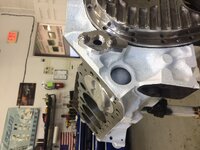vette427sbc
Well-known member
Im designing an exhaust for my corv...(ahem) boat, and would like some design advice
Its a 302 SBC, with high flow water cooled manifolds to dual 3" pipes out the back. The tips are not under water. Id like to have a crankcase evac system through the exhaust to pull a vacuum.
I cant seem to find any data on tube entry angle, depth or angle of the cut for maximum efficiency.
It seems like the kits to do this are ~45 degree entry angle, and a 45 degree cut to make the hole perpendicular to exhaust flow. The tube seems to fall in the center of the tube cross-section as well.
Would a steeper entry angle (more parallel to the exhaust flow) and some kind of small bell flare create a better low pressure area at the end of my tube?
Its a 302 SBC, with high flow water cooled manifolds to dual 3" pipes out the back. The tips are not under water. Id like to have a crankcase evac system through the exhaust to pull a vacuum.
I cant seem to find any data on tube entry angle, depth or angle of the cut for maximum efficiency.
It seems like the kits to do this are ~45 degree entry angle, and a 45 degree cut to make the hole perpendicular to exhaust flow. The tube seems to fall in the center of the tube cross-section as well.
Would a steeper entry angle (more parallel to the exhaust flow) and some kind of small bell flare create a better low pressure area at the end of my tube?

